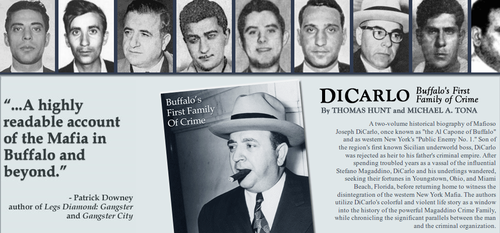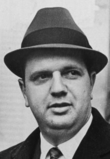The launch of a new book (DiCarlo: Buffalo’s First Family of Crime by Mike Tona and myself) and a new website (buffalomob.com) has taken considerable time and energy. However, I’ve managed to have that work contribute to the offerings here on The American Mafia site. A number of biographies have been added to The American Mafia collection. These link to bios created for the Buffalo-oriented site. To date, the list includes:
- Bonasera, Cassandro (1897-1972) – Brooklyn
- Cammilleri, John (1911-1974)
- Carlisi, Rosario “Roy” (1909-1980)
- Clark, “Jew Minnie” (1887-1959)
- Crocevera, Isadoro (1873-1920) – New York City and elsewhere
- Fino, Joseph (1915-1984)
- Frangiamore, Salvatore (1905-1999)
- Magaddino, Antonino (1897-1971)
- Magaddino, Stefano (1891-1974)
- Montana, John (1893-1964)
- Natarelli, Pasquale (1910-1993)
- Pieri, Salvatore “Sam” (1911-1981)
- Randaccio, Frederico (1907-2004)
- Sansanese, Daniel Sr. (1908-1975)
- Tronolone, John “Peanuts” (1910-1991) – Cleveland


